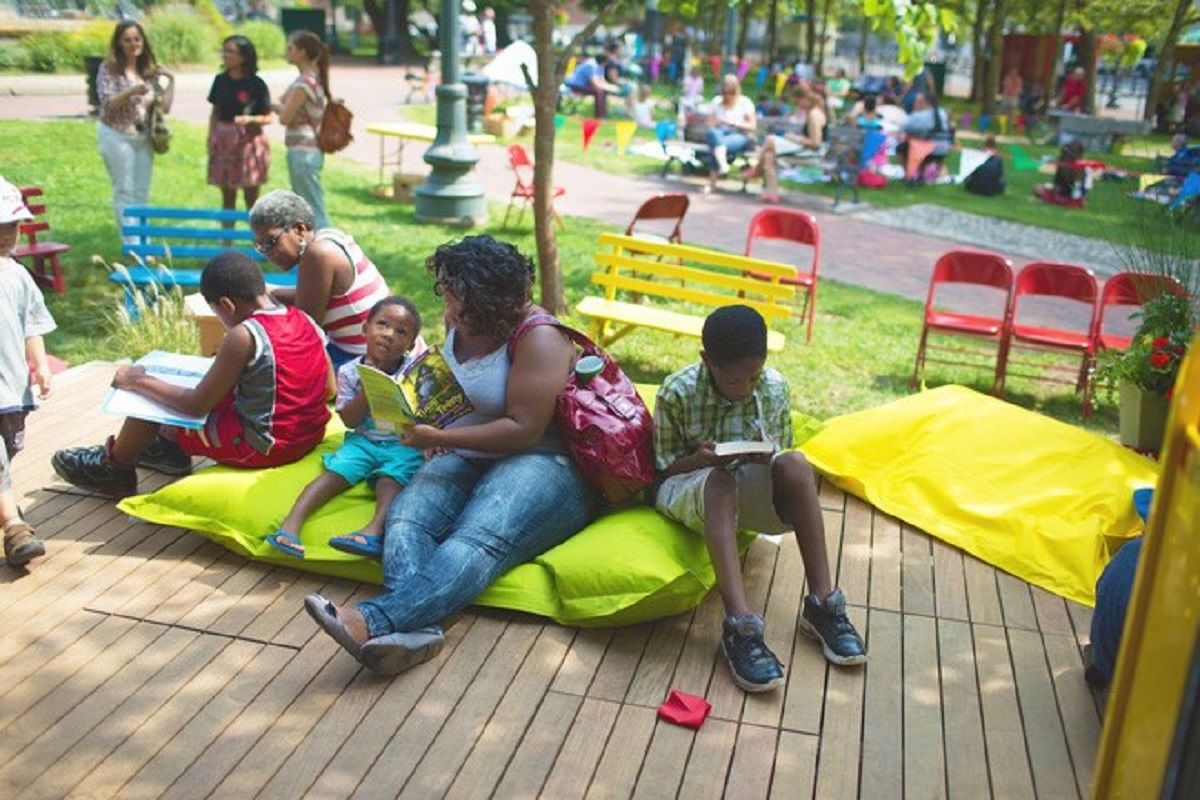Public places are spaces for celebrations, exhibitions, trade fairs, meeting friends and community cultural activities; It could also be libraries, schools or local government offices.
Public dictionaries are everywhere, playing a big role in community life. So what makes a great public place?
In evaluating thousands of public places around the world, PPS (Project for Public Spaces) found that good public places often meet the following four criteria: Usable yes, people like to participate in the activities there, the space is comfortable and the pictures are good and lastly, it's an intimate, comfortable place.

Imagine that the image of the circle in the diagram above is a specific public place that you know, be it a street corner, a playground or a square outside a building… You can judge the place you are thinking of. according to the four criteria outlined near the center of the circle. The next circle is the subjective or objective criteria for evaluating places; The outermost rings are quantitative aspects that can be measured statistically or by research.
SEE ALSO: Perspectives on public space in Vietnamese urban
1. Usability and connectivity

A great public place should be one that easily captures everyone's attention, can be seen no matter how far or near we stand. Ideally, public places are convenient to public transport, which often have high parking turnover.
Questions asked to consider the usability and connectivity of a public place:
Can you see this place from afar?
Is this location connected to buildings or hidden by walls? Do residents of neighboring buildings often visit this location?
Can people easily walk to the site?
Does the street pavement lead to the venue?
Does the venue have a function space for people with special needs?
Does the location have convenient roads and shortcuts that help people get to their desired area quickly?
Can people use multiple transportation options such as bus, car, bicycle… to get to the place?
SEE ALSO: International experience in public space development
2. Facilities and views

Whether the public place is comfortable and well designed is also a big question for its success. Comfort includes safety, cleanliness and readily available amenities located in a public place.
Consideration questions for amenities and landscaping in a public place:
Does this place make a good first impression?
Does the place have more women than men?
Are there enough places to sit and are they convenient? Are people free to choose where to sit (in the sun or in the shade)?
Is this public place a clean and trash-free space? Who is responsible for maintenance? What are they doing? When?
Is this public place safe? Are security issues always handled in a timely manner?
Are there many beautiful places for people to take pictures here?
Do vehicles affect or impede pedestrian use of the space?
3. Functions and activities

Interesting activities will be a reason for people to regularly come and return to a public place. When a public place is not designed or organized a lot of activities, it will just be an empty space and that is really not okay.
Principles to keep in mind in evaluating the performance and operations of a public place:
The more activities that take place in a public place, the better it is for everyone to participate.
Public places have a good balance of male to female ratio.
People of different ages come together to this public place.
The space is used throughout the day.
People come to this public place alone and in groups.
Well managed public place.
Questions to consider about functions and activities in public places:
Is this public place deserted or frequented by people?
Are the people coming here of different ages? Do you belong to the same group or many community groups?
How many different types of activities are taking place in public (walking, eating, playing baseball, chess, relaxing, reading)?
What part of the public space is used and which part is not?
Is there a management or security presence, or can you identify anyone responsible when at risk?
4. Community cohesion

Community cohesion is a difficult criterion for a public place, but when this criterion is achieved, the public place will become an attractive destination, unmistakable with anywhere. In a public place, when people meet friends, say hello to their neighbors, and feel comfortable around strangers, they tend to feel happier and feel more connected to the public place. This will help promote social activities here.
SEE ALSO: 11 rules to follow when designing a vibrant public space
Questions to consider about community cohesion in a public place:
Is this the place you would choose to meet your friends?
Do people here have a good time talking to each other?
When meeting in this public place, everyone seems to know each other's faces and names?
Do people often bring friends and relatives to this public place? Do they talk about a certain feature here with pride?
Is there a mix of ages and ethnic groups in this public place?
Do people tend to pick up trash when they see it?
Translate | H.N (Source: Archdaily)